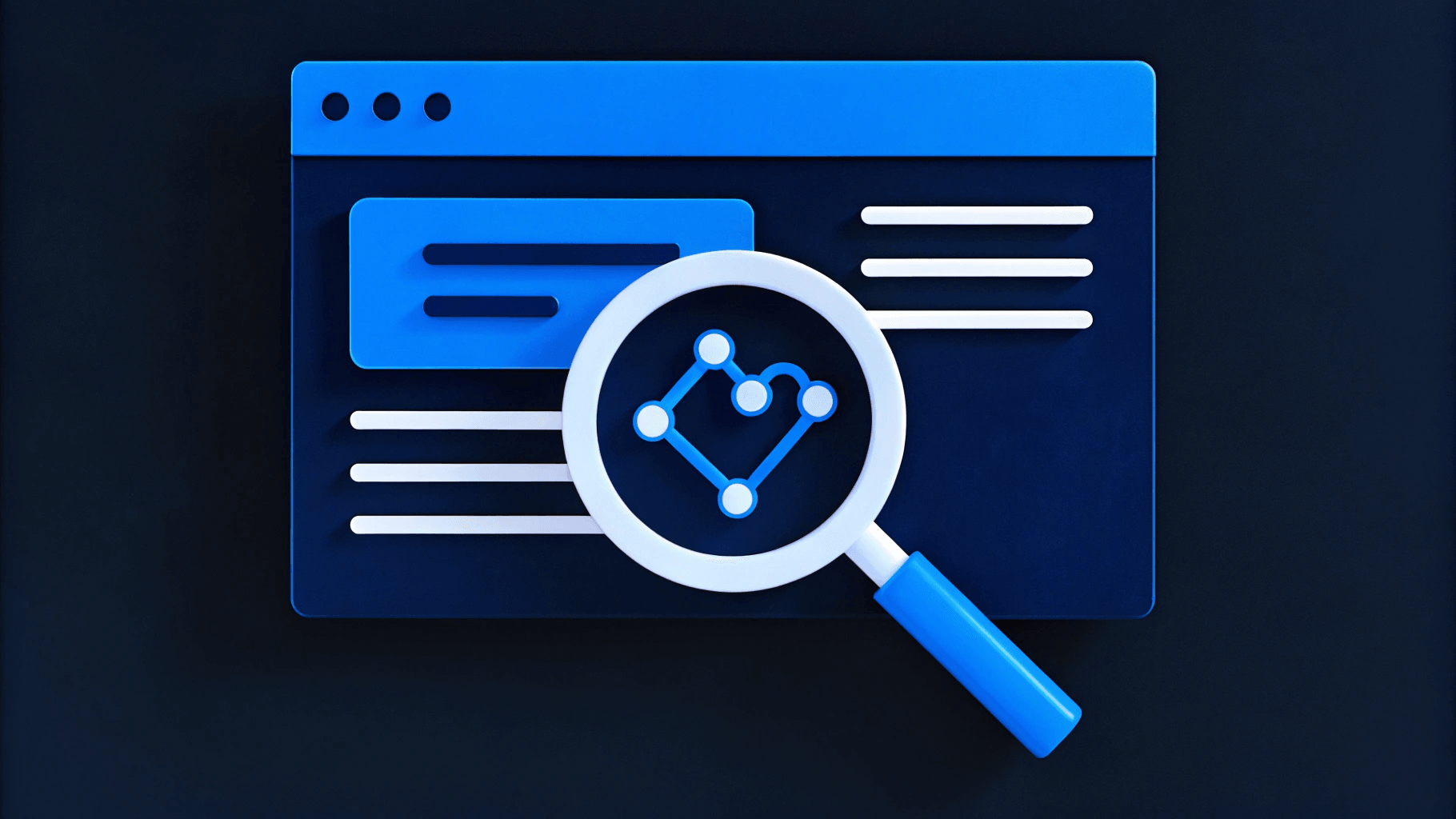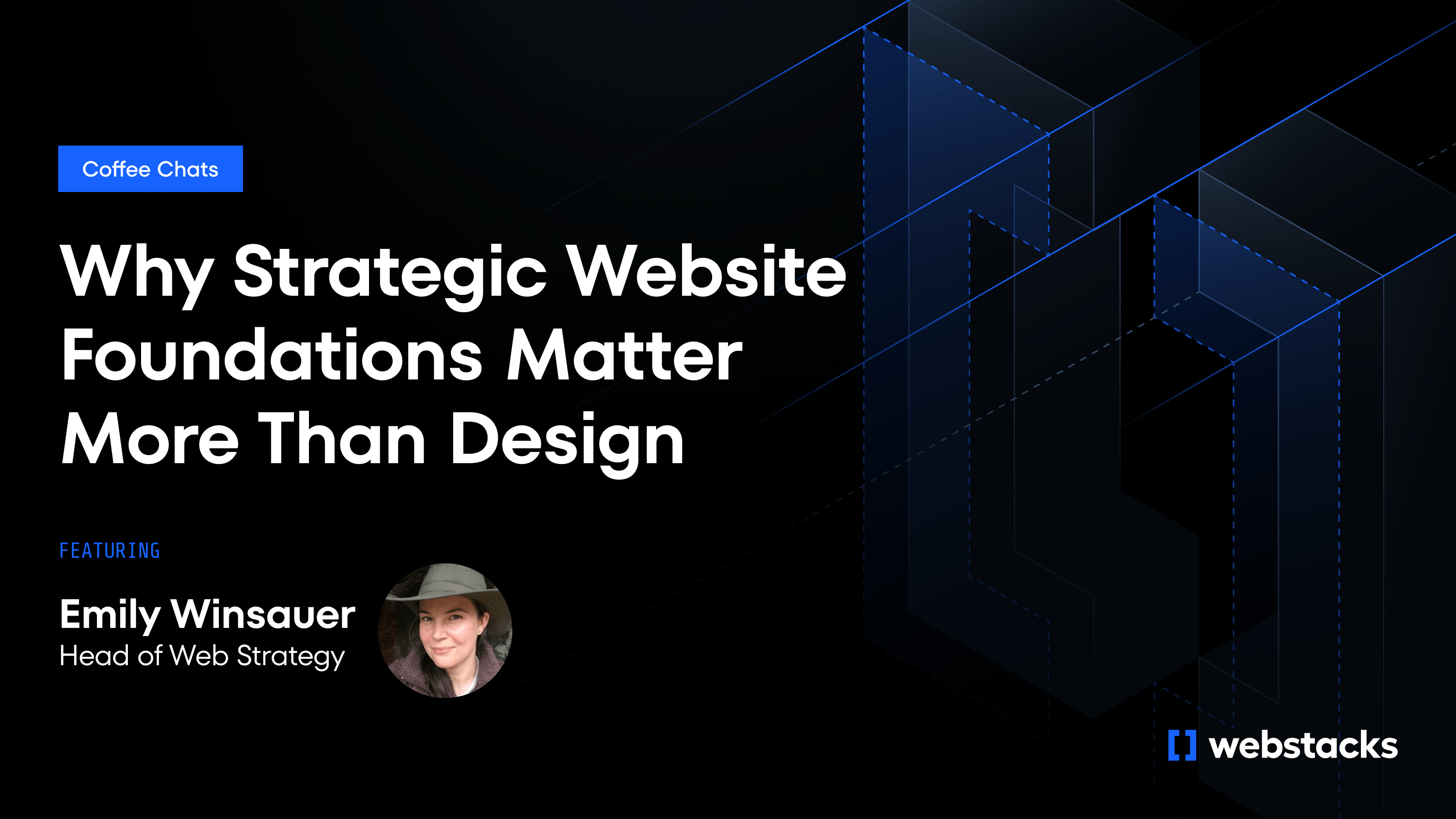Low-code builders opened web development to non-engineers, but the speed they promise fades once traffic grows or requirements expand. Slow page launches, brittle workarounds, and mounting technical debt become common as complexity rises.
Generative AI changes the equation. Tools that plug into a codebase can now draft React components, translate database schemas, and automate accessibility checks in seconds. Instead of dragging a widget onto a canvas and hoping it scales, you describe what you need and receive production-ready code that fits directly into an API-first stack.
Closed ecosystems quickly become a bottleneck when you need advanced personalization, high-traffic performance, or real-time data. API-driven architectures paired with AI stay open, fast, and ready for continuous upgrades. Vendor roadmaps are already prioritizing AI copilots, prompt builders, and self-healing pipelines, while composable CMS vendors position APIs as the universal handshake for new models.
For digital, marketing, and engineering leaders, the takeaway is clear: AI is not an add-on to existing workflows. It works best with an architecture that exposes every piece of content, design token, and analytics event through well-documented APIs. Teams that make this shift gain faster release cycles, lower maintenance, and a platform that evolves in step with the models powering it.

Low-Code Builders: Democratized but Constrained
Low-code builders made it easier to launch landing pages and internal tools without writing every line of code. Drag-and-drop editors and prebuilt components cut early development time and costs, making them effective for proofs of concept or simple microsites. The limitations emerge when projects grow in complexity or performance demands increase.
Common constraints include:
- Customization limits: Templates restrict typography, animation, and interaction design, producing sites that look similar. Unique checkout flows or data-driven dashboards often require hand-coding around the platform.
- Integration challenges: Out-of-the-box connectors work for basic REST calls but often fail with legacy systems, complex authentication, or dated protocols, forcing teams to build custom middleware.
- Performance issues: Abstraction layers control queries, caching, and rendering, adding latency. Under heavy traffic, this slows page loads and degrades user experience.
- Governance risks: Non-technical users can publish pages without oversight, leading to duplicate components, unsecured endpoints, and unclear ownership that are costly to resolve.
- Vendor lock-in: Proprietary code, data models, and design tokens make migration expensive. Roadmaps can stall if features are deprecated, pricing changes, or accessibility updates lag.
- Scalability ceilings: Rate limits, fixed hosting tiers, and closed ecosystems cannot support advanced requirements like real-time AI inference, edge rendering, or event-driven microservices.
For marketing and digital teams, these constraints slow campaign launches, expand backlogs, and fragment design systems. While low-code accelerates the start, scaling advanced digital experiences requires an architecture that can evolve with growth and emerging AI-driven needs.
Operational Gains for Marketing and Engineering Teams
Moving to an AI-ready, API-first stack changes how work flows between marketing and engineering. Instead of passing requests back and forth, both teams operate in a shared environment where structured content, components, and workflows are accessible programmatically.
For engineering, this means fewer interrupts and more focus on core product work. Common marketing needs such as updating campaign copy, adding localized variants, or swapping creative assets can be handled through API calls or automated jobs rather than sprint tickets. Developers spend more time building new capabilities and less on one-off changes, allowing releases to move forward without being delayed by content edits.
Marketing gains the ability to act on data in near real time. With direct access to structured fields in the CMS, teams can publish seasonal campaigns, adjust messaging, or test regional variants without relying on developer availability. Analytics triggers can initiate pre-approved changes, such as updating offers or headlines, while governance rules keep everything compliant.
The results are measurable. Campaign lead times shrink as both teams work in parallel, QA cycles shorten when design and accessibility standards are enforced automatically, and shared API access eliminates duplication of effort. The outcome is a single, governed system that both marketing and engineering can build on together.

Why AI Thrives in API-First, Code-Based Systems
These operational improvements become even more powerful when the underlying architecture is designed for AI. Moving beyond low-code means adopting a structure where every capability is exposed through documented, predictable APIs. API-first design treats endpoints as core products, with interfaces created for any consumer, whether web, mobile, or another service, from the start. This approach establishes clear rules for scalability, security, and governance.
Composable architecture extends this model. Each capability, such as content, checkout, or personalization, runs as its own service and connects through predefined APIs. In this setup, large language models can work with clean, structured data to add context to prompts, generate responses, and write directly back into the system. Every object, from a product spec to a customer segment, has its own endpoint, so AI agents can read, transform, and publish without brittle workarounds. Swapping a general-purpose model for a domain-specific one can be as simple as updating a configuration variable.
Legacy monolithic CMSs and abstracted low-code tools block this level of integration by hiding schemas and event streams. API-first architectures remove those barriers, giving AI direct access to webhooks, granular field updates, and instant publishing.
Practical applications include:
- Triggering a webhook when a marketer drafts a headline so an AI service can score it and generate alternatives.
- Using analytics signals to call an API that swaps a hero image and pushes the change live in seconds.
- Allowing a localization model to pull untranslated fields, return multiple language versions, and publish through the same endpoint.
Because every action in an API-first environment runs through documented endpoints, teams retain full control over performance, governance, and scalability. This structure allows AI to become part of the operational fabric, creating, updating, and optimizing in real time without disrupting existing systems.
Generative AI Use Cases Across the Modern Web Stack
An API-first foundation is not just about creating clean endpoints for future flexibility. It creates the conditions for generative AI to work as a true operational partner. With structured content, modular components, and clear integration points, AI can take on repetitive tasks, optimize live experiences, and help teams deliver faster without sacrificing quality. The examples below show where those gains become most visible.
Component Generation
Developers can provide a simple description and receive production-ready React or Next.js code that adheres to established design tokens. This removes the need to handwrite repetitive markup or CSS, reducing time spent on scaffolding components. Generated code can be inserted directly into repositories, which accelerates QA cycles and reduces the chance of introducing design drift. For complex components, AI can produce a baseline version that developers then refine for performance or accessibility, keeping engineering focused on higher-value logic instead of boilerplate.
Structured Content Population
When CMS content is stored in structured fields, AI can generate complete sets of metadata, translations, and personalized variants for different segments in minutes. Marketing teams can use this to prepare localized product pages ahead of a regional launch or to create campaign-specific copy that aligns with a user’s behavior. Because these updates are made directly in the CMS via APIs, they can be published immediately without a developer deploy. This approach shortens turnaround times from weeks to hours while preserving accuracy and brand voice.
Design-System Compliance
Large language models can review pull requests against a project’s style guide, flagging deviations in spacing, color palettes, or typography before changes are merged. This automated check acts as a second set of eyes that never tires, catching issues that human reviewers may overlook during busy release cycles. Integrating these checks into the CI/CD pipeline helps teams maintain a consistent look and feel, even as multiple contributors work on the same codebase. Over time, this reduces the cost and effort of post-release fixes caused by inconsistent design implementation.
Automation Orchestration
Generative AI can respond to live site data without waiting for manual intervention. For example, if analytics detect a drop in conversions, AI can select a high-performing hero image from the asset library, update it on the page, and start an A/B test with new copy. Navigation can update automatically when new resources are published, and CTAs can rotate based on engagement metrics. These continuous adjustments allow the site to adapt in near real time to user behavior, keeping content fresh and relevant while freeing teams from repetitive optimization tasks.
Case Study: Justworks Migration
After moving from WordPress to a structured Contentful environment, Justworks was able to deploy AI across its web stack. AI-generated copy could be inserted directly into structured fields, translated for different regions, and published instantly. Models reviewed code changes for design compliance, ensuring every page met accessibility and branding standards. Performance data triggered automatic updates such as rotating CTAs or swapping hero images in minutes, with no developer intervention. The shift increased publishing from irregular batches to multiple releases per day, cut the time engineers spent on minor edits by about 40 percent, and gave marketing the ability to launch localized, optimized pages in hours instead of weeks.
From Low-Code to No-Click
Low-code tools accelerated shipping, but their closed systems limit how far AI can go. An API-first, composable stack makes every page, component, and data point available as an endpoint that AI can read, write, and optimize in real time.
With a CMS that already supports REST or GraphQL, connecting an AI service is as simple as making an API call. This flexibility matters because AI evolves fast. New models, lower latency, reduced costs, and richer data sources will continue to raise the bar for performance and personalization.
An open, API-first foundation adapts to these changes without re-platforming. Composable architecture lets you scale or swap individual services, while AI delivers continuous testing, personalization, and optimization at a pace manual processes cannot match.
The result is a site that evolves alongside your business: adjusting CTAs as conversion patterns shift, rolling out localized content for new markets, and fine-tuning performance in the background so teams can focus on strategy.
Take the next step toward an AI-ready platform; talk to Webstacks about building the foundation that will keep your site competitive through the next wave of change.




